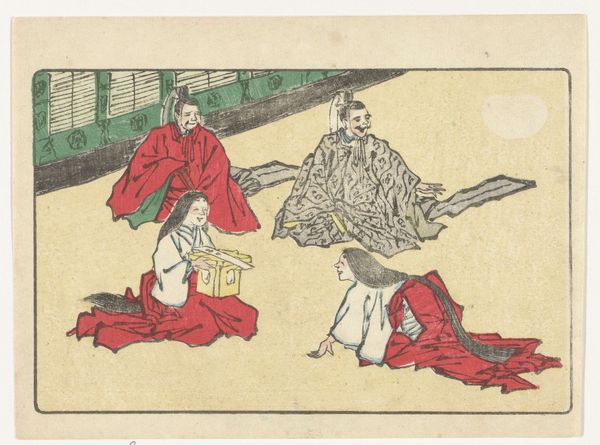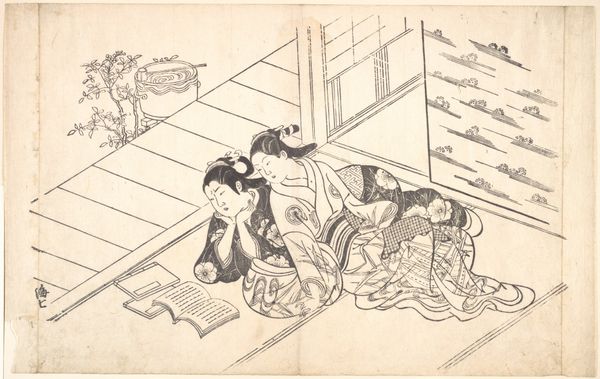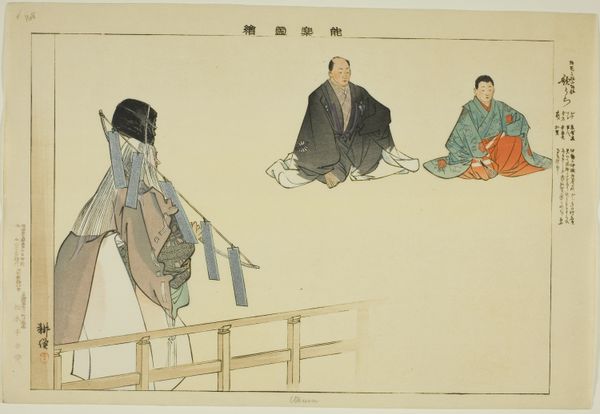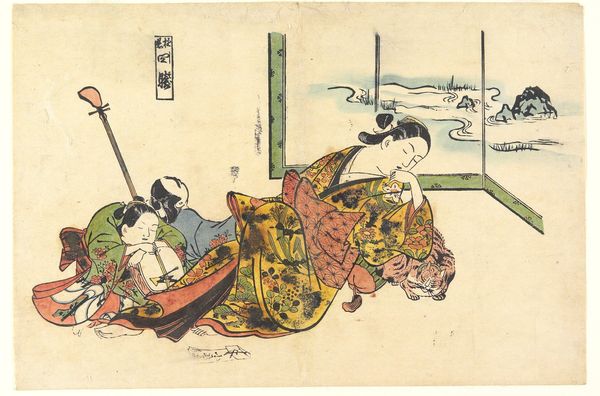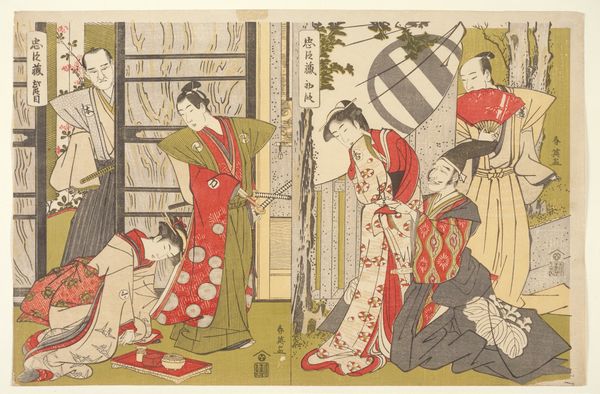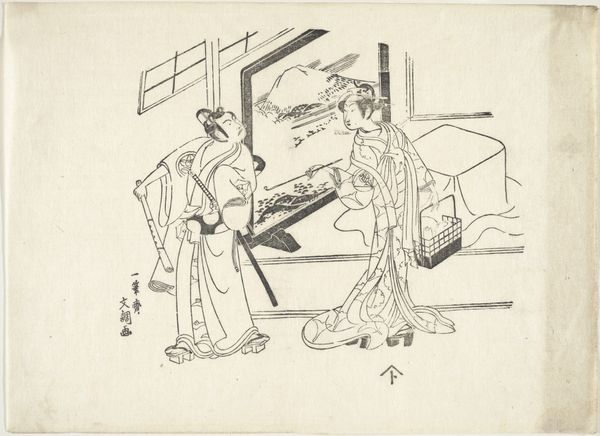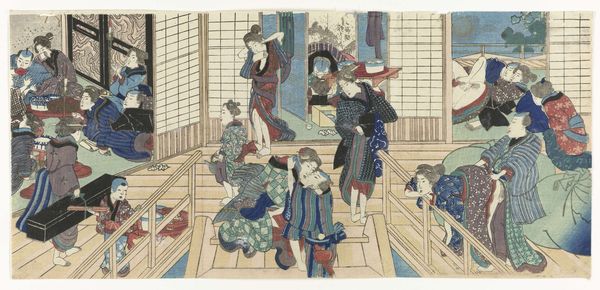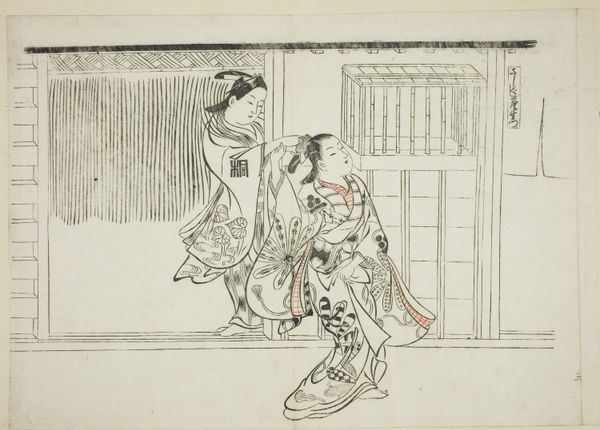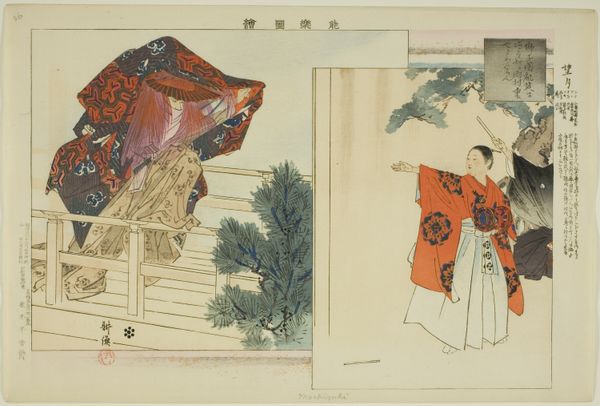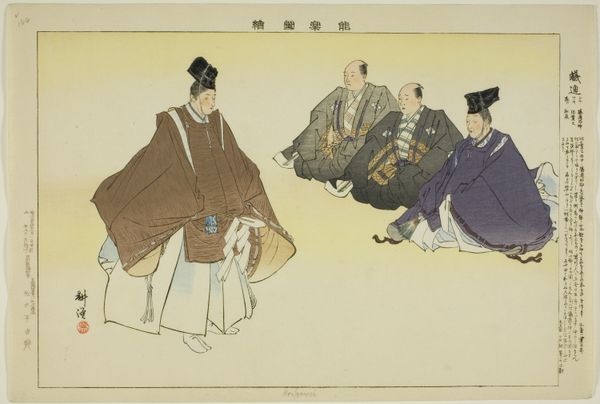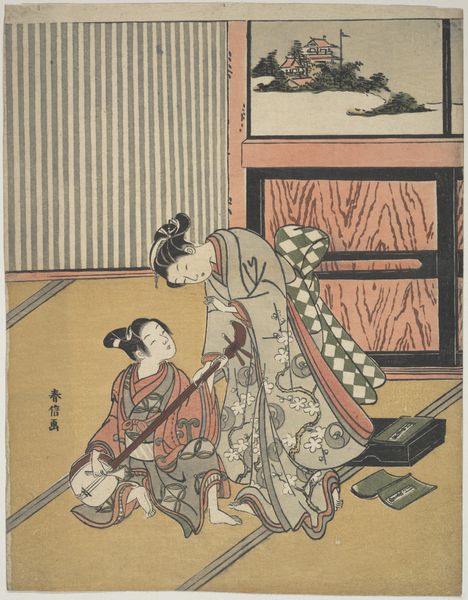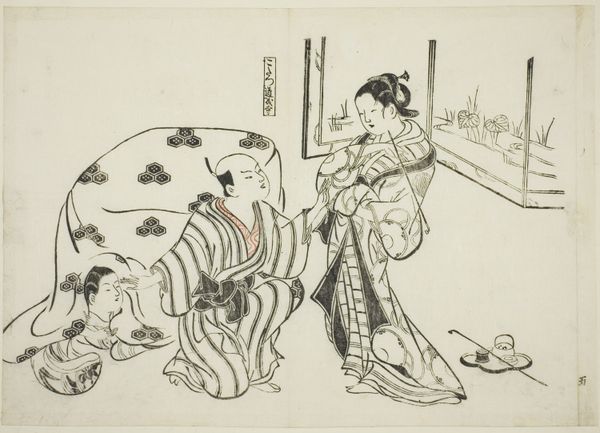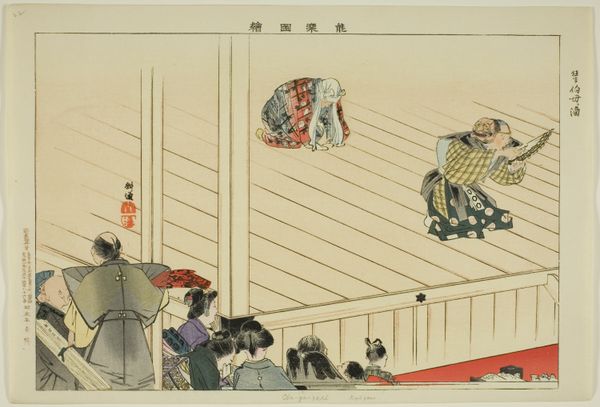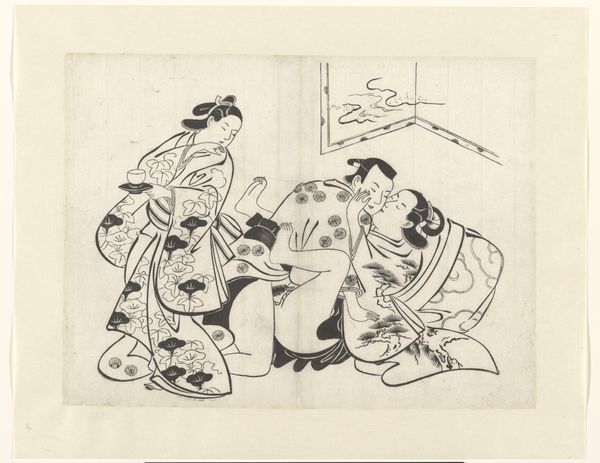
Dimensions: height 130 mm, width 176 mm
Copyright: Rijks Museum: Open Domain
This color woodcut, depicting three courtiers, was made by Kawanabe Kyōsai in nineteenth-century Japan. Kyōsai was trained in ukiyo-e, a printmaking tradition that literally means ‘pictures of the floating world.’ This phrase references the ephemeral pleasures of urban life, which were made newly accessible by Japan’s emerging merchant class. His works were produced through a division of labor. Kyōsai would have drawn the original design, which was then transferred to a woodblock, carved by a specialist, and printed by another artisan. This division of labor allowed for mass production, but also required an intense level of coordination and skill. Look closely, and you’ll see the layered effect that is so characteristic of ukiyo-e. The courtiers, with their patterned robes, are typical of Kyōsai’s ability to bring together acute observation and artful design. By appreciating the labor and social context embedded in this print, we move beyond an appreciation of its aesthetic qualities, and towards a fuller understanding of its cultural significance.
Comments
No comments
Be the first to comment and join the conversation on the ultimate creative platform.
